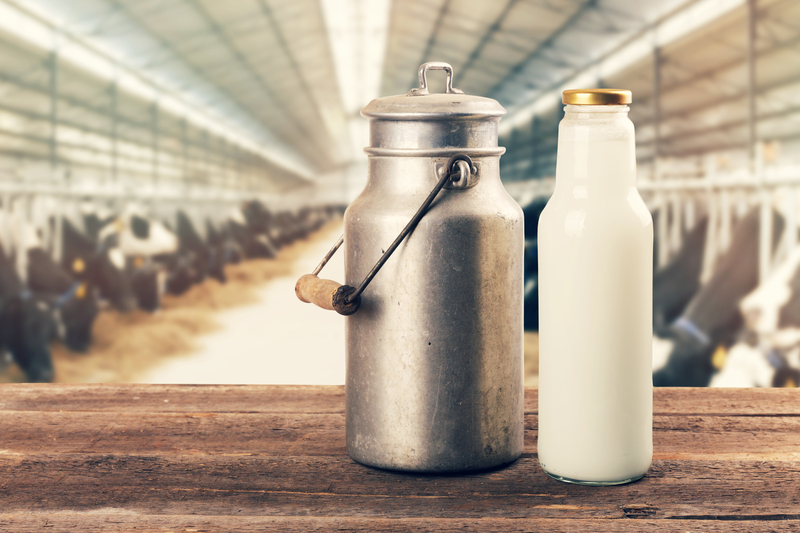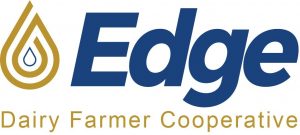
Mid-May Chicago Mercantile Exchange dairy prices were mostly higher; though the cheddar blocks back tracked from the previous week’s $1.98 per pound, ending seven weeks of gain and falling to $1.90 May 16. They closed May 17 at $1.9425, down 3.75 cents on the week but still 40.75 cents above a year ago.
The barrels saw almost daily gains and marched to $2.125 on May 17. This is up 21.25 cents on the week, the highest since Oct. 20, 2022, 65.5 cents above a year ago, and 18.25 cents above the blocks. Thirty-four cars of block were traded and 10 barrel.
Dairy Market News reported there were multiple Midwest processing plants on either scheduled or unexpected downtime this week. The top of the spot milk price range was holding mid-week at 50 cents over Class III, while the bottom got as low as $4-under Class. Cheese plants able to run full schedules were busy and some added a weekend day to the schedule.
Demand tones have shifted since mid-April. Cheddar and Italian style cheesemakers say they are turning down new orders. Barrel cheesemakers say that when a load is available on the spot market, customers are there. “Cheese market tones are clearly finding some bullish tailwinds,” says Dairy Market News, though the price split between blocks and barrels “tends to create a less-than-assured overtone.”
Cheese manufacturing is steady in the West, though some plants are bringing in additional milk to boost production. A few are running lighter schedules due to “less than stellar domestic demand,” says Dairy Market News. Class III spot milk loads are tightening slightly in some parts of the region.
Domestic cheese demand over recent weeks has been stronger and exports steady however, with domestic prices shifting above international prices that may change. Market tones have been bullish, says Dairy Market News, but “Sentiments of industry participants are mostly neutral to somewhat bearish this week.”
Spot butter jumped 3.75 cents on May 13, gave most of it back the next day, but rallied and closed May 17 at $3.07 per pound. This is up 8 cents from the previous Friday, and 61 cents above a year ago. There were 20 CME sales for the week.
Central butter makers report a similar market environment to previous weeks. “Customers’ interests have picked up due to both seasonal trends and as a push to get ahead of continued bullish market prices,” says Dairy Market News. “Food service demand is not noted as robust, but meeting expectations while retail orders are ahead of previous years’ numbers according to some contacts. Cream remains widely available, particularly in the southern area of the region, however cream handlers relay that Class III interests have begun to pull from the cream supply. Butter makers do not expect near-term cream tightness. Bulk butter is available but not abundant. The current sentiment is ‘How bullish and for how long?’”.
Western butter manufacturers are running strong schedules, with a few saying they will continue to do so ahead of the upcoming downtime in June for churn maintenance. Milk volumes are slightly tighter in some parts of the region but milkfat components are up and cream availability remains comfortable. Domestic butter demand is strong, with export interest moderate.
Grade A nonfat dry milk climbed to $1.1675 per pound on May 13 (the highest CME price since March 12, 2023). It closed May 17 at $1.165, 1.25 cents higher on the week and 1.25 cents above a year ago. There were 30 sales on the week, 26 on May 14 alone — the most in a single day since Feb. 3, 2021 when 33 were sold.
StoneX points out, “With June Class III now more than $5.00 per cwt. above April, there may be growing incentive for U.S. buyers of fresh milk who can also use nonfat dry milk in the production of their products to buy nonfat dry milk more aggressively.”
Dry whey saw a May 17 finish at 41.5 cents per pound, up 3 cents on the week and 15 cents above a year ago, with 12 sales for the week at the CME.
While dairy prices look hopeful, Rabobank’s recent quarterly report warns, “The initial surge in dairy prices seen in late 2023 and early 2024 was largely due to a period of restocking at lower prices rather than a robust uptick in consumer demand.”
The report suggests, “The global dairy market may experience a slower recovery than previously anticipated, particularly as China’s dairy imports remain lackluster.”
Rabobank analyst Lucas Fuess said in the May 20 “Dairy Radio Now” broadcast that low cheddar production and strong cheese exports tightened the U.S. market; but globally, we saw “relative weakness in second quarter with a slight recovery into the second half of the year.” Some of that is due to “easy prior year comparable data,” he explained. “It will be easier for countries like the U.S. and Europe to make gains.”
He entitled the report “Searching for Equilibrium,” and said it follows a period of lower supply and weakened demand. “Things are looking a little bit better into the second half of the year;” but he does not see a huge resurgence in buying from China, although Southeast Asian nations and Mexico are stepping up purchases.
When asked about the impact of avian influenza, Fuess said Rabobank has not seen any huge impact. The cheese market gains were due more to other factors, he said, though there may be a slight impact on milk supply — particularly in Texas.
There isn’t a lot of data on the demand side of things yet, he said. However, “Anecdotally there has been limited impact from consumers because of the influenza though it remains a cautionary watch factor.”
As reported last week, the U.S. Department of Agriculture raised its 2023 milk production forecast its latest World Agriculture Supply and Demand Estimates report and gave us a preview of what it expects in 2025. It also raised its estimate of the 2023 Class III milk price average and lowered the Class IV projection.
This month’s U.S. corn outlook is for larger supplies, greater domestic use and exports, and higher ending stocks. The corn crop was projected at 14.9 billion bushels, down 3 percent from last year’s record as a decline in area is partially offset by an increase in yield. The yield projection is 181 bushels per acre. Total corn supplies are forecast at 16.9 billion bushels, the highest since 2017-18. Total U.S. corn use was forecast to rise just under 1 percent. Food, seed, and industrial use is forecast at 6.9 billion bushels. Corn used for ethanol was unchanged.
The outlook for U.S. soybeans is for higher supplies, crush, exports, and ending stocks. The soybean crop is projected at 4.45 billion bushels, up 6.8 percent or 285 million bushels on higher area and trend yield. Soybean supplies are forecast at 4.8 billion bushels, up 8 percent. The soybean crush was projected at 2.43 billion bushels, up 125 million.
The latest Crop Progress report shows 49 percent of U.S. corn was in the ground as of the week ending May 12, up from 36 percent the previous week, but 11 percent behind a year ago, and 5 percent behind the five-year average. Twenty-three percent was emerged, 2 percent behind a year ago. Thirty-five percent of the soybeans were in the ground, 10 percent behind a year ago, but 1 percent ahead of the five-year average. Sixteen percent were emerged, 1 percent behind a year ago.
Dairy cow slaughter for the week ending May 4 totaled 49,000 head, down 4,300 from the previous week and 8,100 or 14.2 percent below a year ago. Year to date, 1,171,000 have been culled, down 153,400 or 13.1 percent from 2023.
The May 16 Daily Dairy Report points out, “With dairy heifer inventories at multi-decade lows, producers have fewer opportunities to cull low-producing milk cows and replace them with heifers that are ready to enter the milk parlor. Producers who don’t want to pay skyhigh prices for replacements can keep more low-producing cows in the herd, effectively lowering cull rates, or milk fewer cows.”
This week’s Livestock, Dairy, and Poultry Outlook mirrored the milk price and production projections in the May 10 WASDE. The Outlook shows the 2024 dairy herd forecast was raised 10,000 head to 9.345 million. “In response to better-than-expected average milk yields in the first quarter and overall lower expected feed costs, the 2024 milk-per-cow forecast was raised to 24,330 pounds, 85 pounds above the previous forecast,” thus the increased projection in milk output.
The 2025 dairy herd was projected to increase by 20,000 head from 2024 and to average 9.365 million. The forecast for average milk per cow is 24,485 pounds, up 0.6 percent. “The projected growth reflects expectations of improved farm margins through 2024 that will affect 2025 production levels,” the Outlook states.
As of May 14, Highly Pathogenic Avian Influenza (HPAI) had been confirmed in nine states and 46 dairy herds, according to the Outlook. “Mandatory testing for lactating dairy cattle is required prior to interstate movement. Additional guidelines were issued by USDA’s Animal and Plant Health Inspection Service (APHIS) on May 8. USDA has found that the virus can spread in several ways: within the same dairy herd, when dairy cattle change location, and from dairy to poultry. In some cases, dairy cows tested positive without showing any symptoms. The affected cows recovered within several weeks.”
“Pasteurization has continually proven to inactivate bacteria and viruses and hence reduce the risks to human health. Moreover, the U.S. Food and Drug Administration continues to advise against the consumption of raw milk.” For further updates, visit the APHIS or U.S. Food and Drug Administration website.
Cooperatives Working Together members accepted 16 offers of export assistance this week that helped them capture sales contracts for 2.9 million pounds of American-type cheese and 3.1 million pounds of whole milk powder. The product is going to customers in Asia, Central America, the Caribbean, Middle East-North Africa and South America through September.
This week’s Global Dairy Trade Pulse auction saw 3.75 million pounds of product sold, down from 3.79 million on April 30. 97.2 percent of the total offered was sold. There was 498,240 pounds more instant whole milk powder and 597,447 pounds less regular whole milk powder sold vs. the last Pulse and 59,524 pounds more skim milk powder on offer was sold. HighGround Dairy stated, “This was the largest volume of instant whole milk powder ever sold on the GDT Pulse platform.”
The International Dairy Foods Association announced, “The Capitol Hill Ice Cream Party will celebrate its 40th year in June as Washington’s most popular warm weather celebration. The party on the National Mall just outside the U.S. Capitol Building is one of Washington’s most anticipated for professionals working in food and agriculture, bringing together thousands of guests, including members of Congress and officials from the executive branch, in a fun event showcasing America’s favorite frozen treats. This year’s Capitol Hill Ice Cream Party will be held on June 12.”
Lee Mielke is a syndicated columnist who resides in Everson, Wash. His weekly column is featured in newspapers across the country and he may be reached at lkmielke@juno.com.
You can now read the most important #news on #eDairyNews #Whatsapp channels!!!
🇺🇸 eDairy News INGLÊS: https://whatsapp.com/channel/0029VaKsjzGDTkJyIN6hcP1K

























